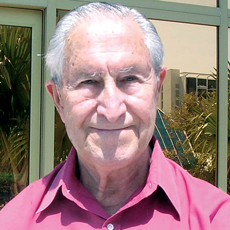
Despite the rapidly growing elderly population, senior living communities sometimes have empty apartments and the worry is that prospective residents will look askance at a facility having more than a few vacancies. They might think that there must be something wrong with a place if it is not filled to capacity. Prospects often seem favorably impressed when confronted with a waiting list.
Therefore, most agree that marketing occupies a place near the top of the list of management functions for a senior living community. In fact, this article seeks to elevate marketing strategy still higher by suggesting a few “out-of-the-box” ideas to reinforce efforts to attract new residents.
The Telephone. Return to the telephone as a powerful sales tool. In the past businesses and organizations recognized the value of a phone conversation to build good will. Staff was trained to talk on the phone as though callers were potential clients. But with the advent of voice mail and computing, it is as though people now isolate themselves from phone “interruptions.”
With friendly phone chatting now all but a lost art in our economy, an organization using the telephone as a sales tool will soon stand above its competition. Assuming that some person is always assigned to duty at the reception desk, for example a maintenance person on a Sunday night, that individual should be equipped with a fact sheet containing data with which to respond to questions a caller asks. A copy of this script should always be on hand at the desk.
Residents may be asked to volunteer to speak with callers on a scheduled basis. A resident might be pleased to talk with a prospect if called upon to do so. What could be more inviting to an outsider than to exchange thoughts with someone already enjoying the facility’s lifestyle?
In a related vein, calls to the desk should always be treated with respect. The response, “I don’t know,” should be replaced with “I’ll find out and get back to you.” Staff should be trained to be customer-oriented in their everyday activities, particularly on the telephone. Nothing is as easy as use of the phone for creating and maintaining favorable impressions and hence attracting residents. In the parlance of organization theory, one may say it is a way to open the system.
An Advisory Council. Another way to open the system is for the organization to create an advisory council comprised of individuals from business, the professions, the press, educators and distinguished people in the community. Residents’ adult children should also be invited to join the advisory council; interested in their parents’ well-being, it is they who are often directly involved with their parents’ financial and personal matters.
At least three benefits accrue to the organization from thus opening its system. First, the public relations value can be enormous. Second, it is easy to see how members of the Council soon become the facility’s ”salesmen.” Also, a learning process occurs as residents serving on the facility’s board of directors will inevitably interact with advisory council members and benefit from the latter’s expertise in their respective fields.
The facility’s image in the community is also enhanced by events such as an Open House, when neighbors and their families can visit, mix, chat, socialize, inspect living quarters and lunch with residents. Doors may be opened to the public for some of the organization’s activities. Space may be made available for community affairs, meetings and voting.
Public Relations. Community contact is also achieved with a good public relations program. PR is hardly unknown to marketing but is often overlooked. It is not only one of marketing’s most important communication media, it is also the least expensive. A first step is to search among the resident body, for someone with a propensity for unusual happenings. Virtually any meaningful event is material for media interest.
For a few examples, the executive director, in his leadership capacity, may conduct a survey of residents, create a problem-solving committee, start a course in courtesy training for staff, adjudicate some wrongdoing or award outstanding service. Almost any innovation will serve the purpose, even if it borders on the bizarre; an outlandish brainchild might bring surprisingly beneficial outcomes. For example, if an executive director were to invite residents to “take over my job for one hour,” the result would likely yield amusement, compassion for management complexities and in the process, a captivating press release.
An interestingly written press release is often eagerly accepted for publication. Indeed, the press is constantly on the lookout for such releases to fill its columns. Who should write releases? Again, one may seek from among the residents, a person with PR or journalist background. An English teacher, a writer or editor? Perhaps a professional could be hired. Consider holding a press conference for big events.
The possibilities for publicity schemes are endless – announcements that the facility had adopted some interesting new program, created an advisory board, started an employee training program, initiated round-the-clock phone information, injected integrity and ethics into the marketing process, etc. With decisions in place to implement such refinements, the organization can convince a journalist to print a column heralding the new organizational philosophy. A newspaper column headlined, “Roseland Enhances Eldercare Environment,” would go a long way to open the facility’s system and attract new residents.
Seymour H. Fine holds the Ph. D. in marketing from Columbia University’s School of Business. He is author of The Marketing of Ideas and Social Issues.



